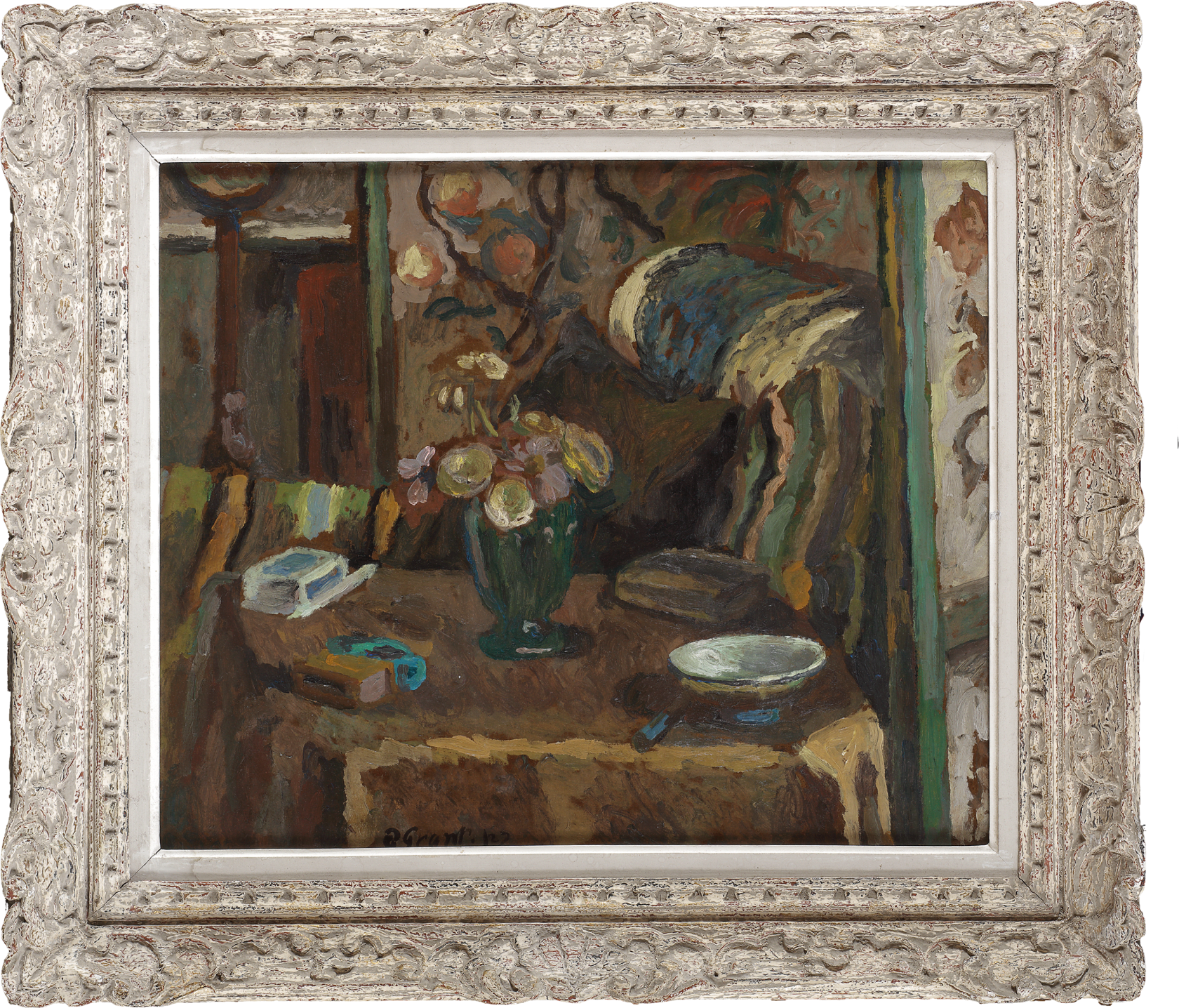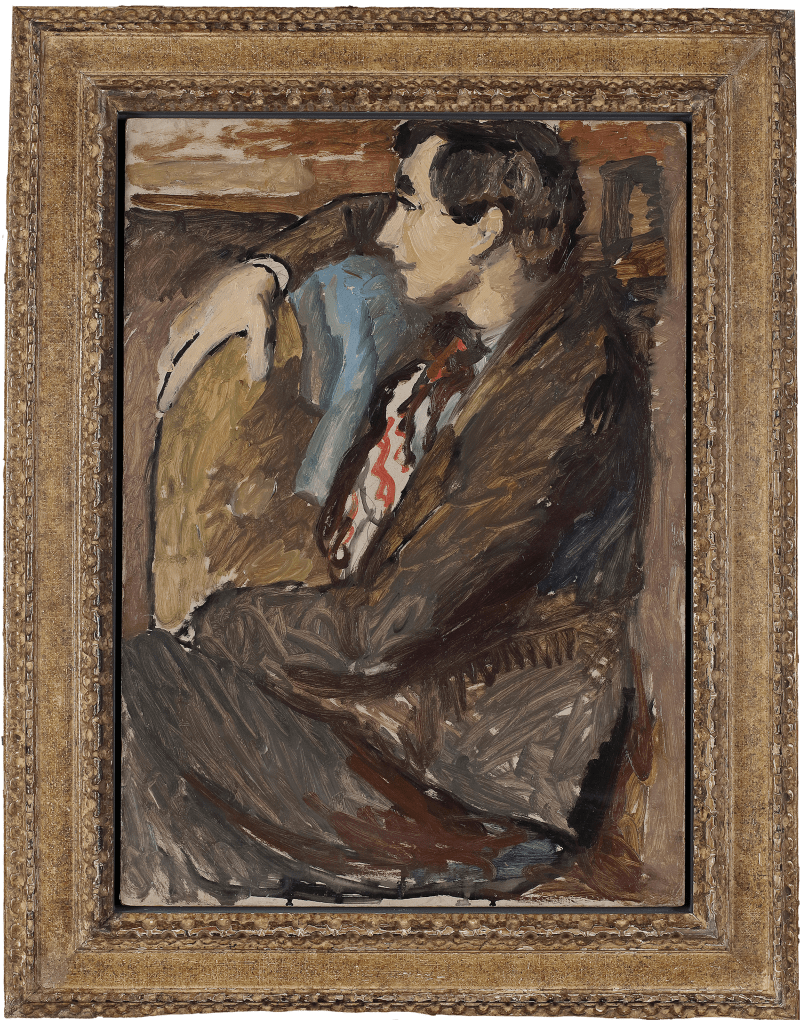This briskly painted still life was likely painted at Charleston and characterises Duncan Grant’s pursuit of visual harmony in the commonplace.
The composition draws the viewer into an intimate domestic space where a green vase of flowers sits on a table in the centre of the composition. The scene is anchored by a deep, earthy palette and a confident handling of paint, with rhythmic brushstrokes. His sensitivity to tone and surface was particularly heightened at this time, and his brushwork had grown markedly looser compared to his style of the previous decade. Here, Grant demonstrates his ability to imbue the ordinary with beauty through painterly sensitivity and tonal nuance.
Grant’s choice of subject matter aligns closely with his lifelong engagement with interiors as spaces of both personal reflection and artistic experimentation. The furnishings – a striped upholstered armchair and a decorative patterned screen, quite possibly an Omega Workshop production – recall the decorative sensibilities that permeated his work at Charleston,...
This briskly painted still life was likely painted at Charleston and characterises Duncan Grant’s pursuit of visual harmony in the commonplace.
The composition draws the viewer into an intimate domestic space where a green vase of flowers sits on a table in the centre of the composition. The scene is anchored by a deep, earthy palette and a confident handling of paint, with rhythmic brushstrokes. His sensitivity to tone and surface was particularly heightened at this time, and his brushwork had grown markedly looser compared to his style of the previous decade. Here, Grant demonstrates his ability to imbue the ordinary with beauty through painterly sensitivity and tonal nuance.
Grant’s choice of subject matter aligns closely with his lifelong engagement with interiors as spaces of both personal reflection and artistic experimentation. The furnishings – a striped upholstered armchair and a decorative patterned screen, quite possibly an Omega Workshop production – recall the decorative sensibilities that permeated his work at Charleston, the Sussex farmhouse he shared with Vanessa Bell. The composition as a whole conveys the cultivated disorder of a lived-in, creative environment, typical of the Bloomsbury aesthetic, where art and everyday life were seamlessly intertwined.
By 1927, when this painting was created, Grant was a well-established figure in British art. His decorative work with the Omega Workshops and his Post-Impressionist influences had, by now, evolved into a distinctive painterly language. His interplay of colour and shape here serves not only to organise the picture plane but to evoke a certain atmosphere which is quiet, thoughtful, and private.
A label on the reverse of the painting records that it was purchased from the London Artists Association by ‘Miss Ewbank’, almost certainly Elinor Ewbank. A pioneering researcher, Ewbank was the first woman to earn a First in Chemistry at Oxford and conducted significant research into explosives during the First World War. She and her sisters were close to Duncan Grant in their youth, and in later years her Oxford home contained several works by the artist, including a decorated tiled fireplace.[1]
[1] Frances Spauling (1997), Duncan Grant. London: Chatto & Windus, p.32-33.











